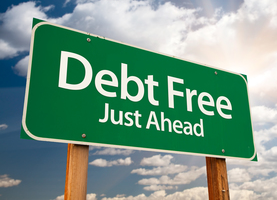by Susan Paige

Approximately 93.5% of the adult population in the U.S. have bank accounts. If you have a bank account, you should receive statements each month from your bank.
When you receive your bank statement, do you read it? Do you even look at it?
Many people do not realize how crucial it is to read, interpret, and analyze their bank statements, which might explain why so many people never read theirs.
If you skip reading yours, you should stop this habit and start reading yours. Here is an explanation of why you should read your statements and tips to help you know how to read them correctly.
Reasons to Start Reading Your Bank Statement
You might not think that your bank statements are essential, but they are. They contain the details of every transaction that occurs to your bank account for one month.
Reading your bank statements is crucial for the following reasons:
1. To Verify the Accuracy of Your Transactions
Your bank uses a bank statement template guide to list all your transactions for one month. If you don’t review this statement each month, how do you know that it’s accurate?
Reviewing your statements is the only way to verify every transaction’s accuracy, and this is the top reason you should read your statements.
A common error that occurs involves tips you leave at restaurants.
For example, imagine if you meant to leave a $10 tip to your server. If the server inadvertently inputted it as $20, you would have a larger charge than you thought. If you do not check your statement, you might never catch this error.
2. To Spot Fraud
The second reason to read your statements is to spot fraudulent transactions. If you read and compare each transaction to your records, they should match. You should never have transactions on your statement that you did not make.
Reading your bank statement is the ideal approach for detecting fraud. If someone happens to steal your financial information and use your account to make small purchases, you might not notice the money is missing.
You can catch fraud by carefully analyzing each transaction.
3. To See Bank Charges
It’s also critical to read your statements to determine if you have any bank charges. A bank charge is a fee that your bank charges for a specific reason.
For example, you might have a standard fee each month for having an account. You might also incur a fee if you bounce a check. Some banks even charge fees for exceeding the limit of allowable transactions.
4. To Learn More About Your Spending Habits
The fourth reason to read your bank statements is to learn more about your spending habits. Does your budget matter to you? If it does, and you’re still struggling financially, read about Alabama title loans
These are four excellent reasons to start caring about the information found on your bank statements.
Tips to Help You Know How to Read Them
Understanding why you should read your bank statements is an excellent place to start, but you may also need to learn how to read them.
Here are four tips to help you learn how to read and use your bank statements accurately:
1. Learn How to Reconcile Your Account
If you use a check register to track your account’s transactions, you will need to learn how to reconcile the account. It is helpful to reconcile your account every month when your statement arrives.
To do this, you should check each transaction on your check register if it appears as a cleared entry on your bank statement. When finished, add up any uncleared deposits and charges found on your check register.
Add or subtract these to the ending bank balance on the statement. After finishing this step, the amount you calculate should match the ending balance in your checkbook.
2. Use Software to Track Spending
As you begin learning how to read your bank statements, you may decide that using software to track your spending is a good idea. You can purchase many types of financial software that allows you to record all your banking transactions.
Using software makes reconciling and evaluating your bank statements a lot easier, and it is helpful for learning more about your finances.
3. Use the Information to Gain More Control of Your Finances
If you use software to track your transactions, you can run reports to see how much money you have coming in each month and how much you spend each month.
You can analyze the summaries on the report to find ways to cut back on spending. For example, if you discover that you spend $150 each month on coffee and donuts, you might consider cutting this expense out to save the money instead.
4. Understand the Difference Between Your Bank Balance and Actual Balance
Finally, when you start learning how to read your bank statements, you will learn the difference between the balance the bank says you have compared to your actual balance.
The bank balance only shows cleared transactions, so the balance is not necessarily accurate. Your actual balance takes into account every transaction, even those that have not yet cleared the bank.
Following these tips may help you understand more about your finances. These tips may also help reduce fraud with your accounts and gain more control over your spending.
How to Learn More About Analyzing Your Bank Statement
Reading your bank statement is an essential activity you should complete every month. By doing this, you can learn a lot about your finances. It also helps you protect your money.
If you are interested in learning more about bank statements and how to read them, check out the rest of our blog for informative articles on banking topics.


So, what do you think ?